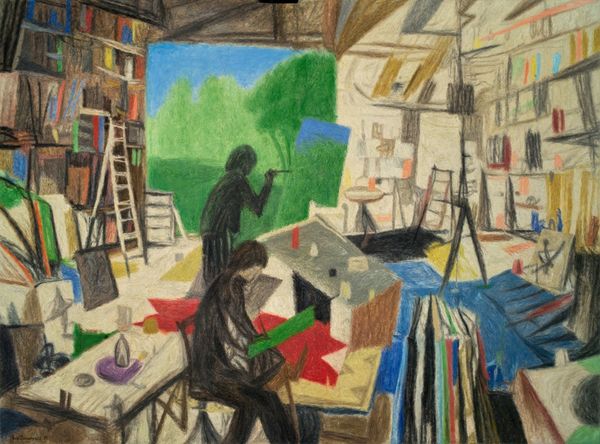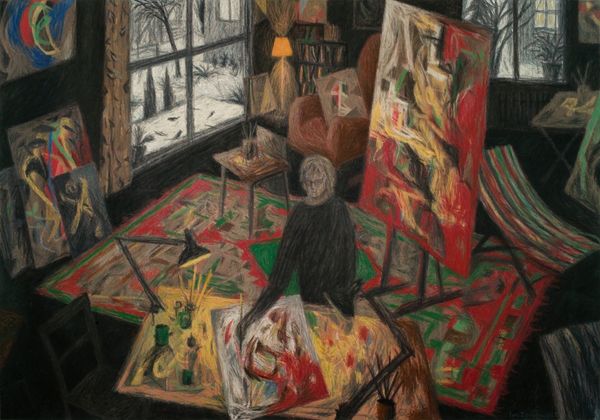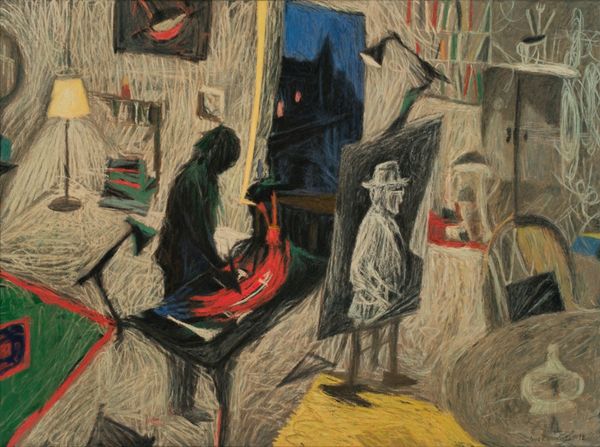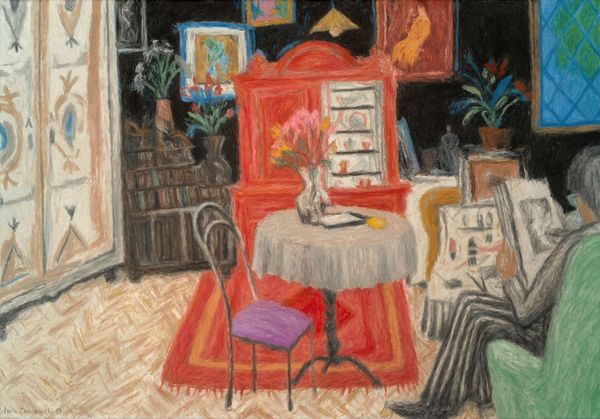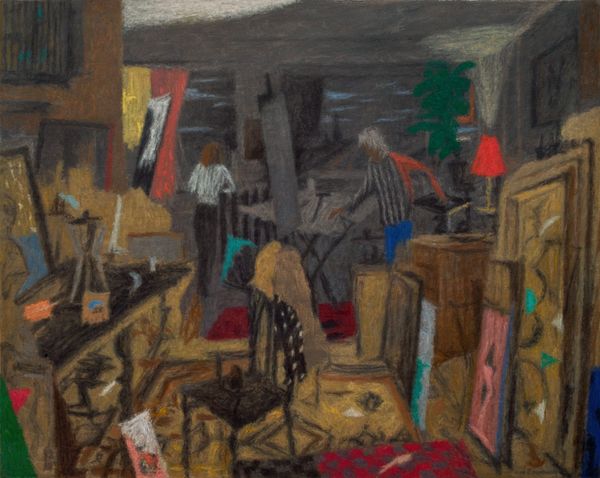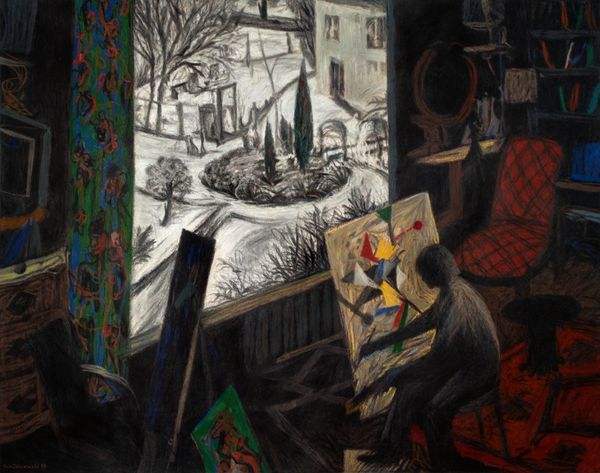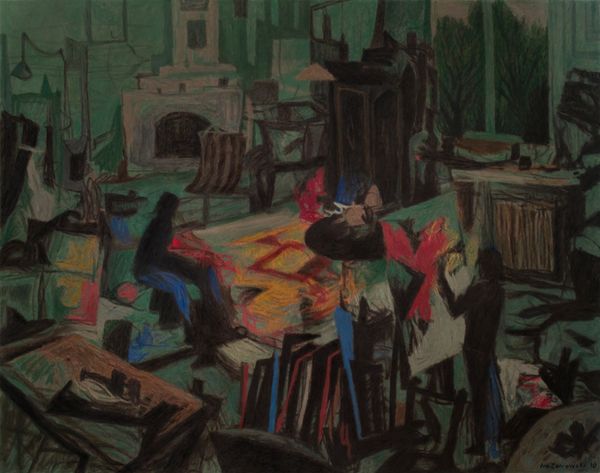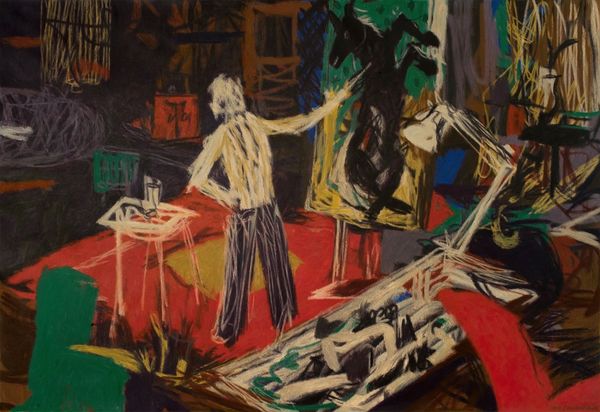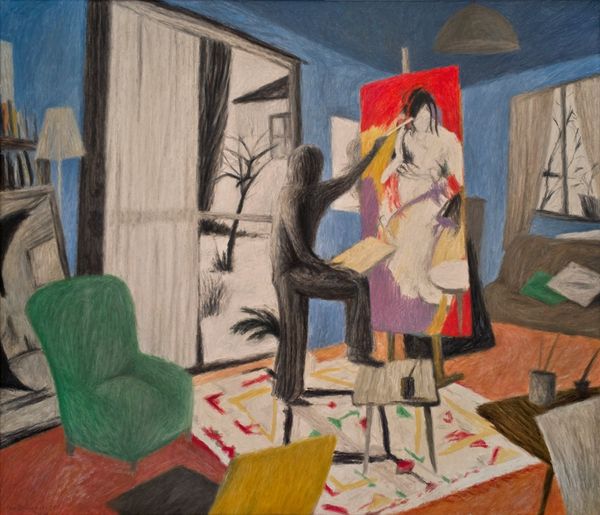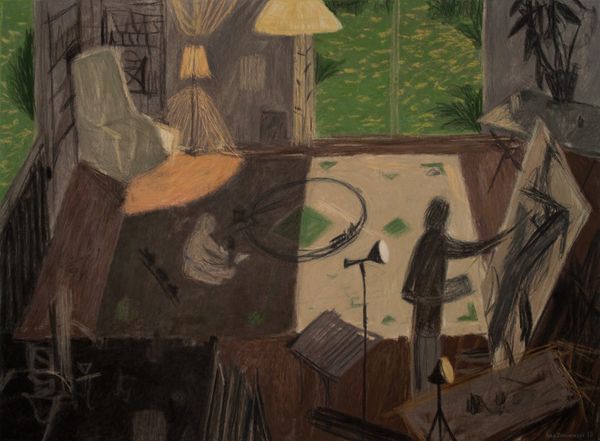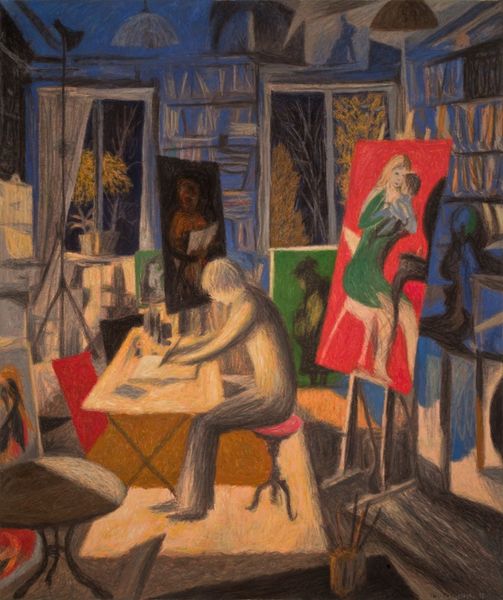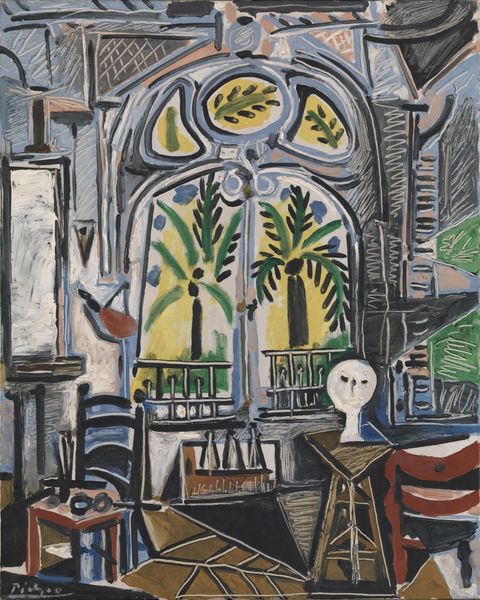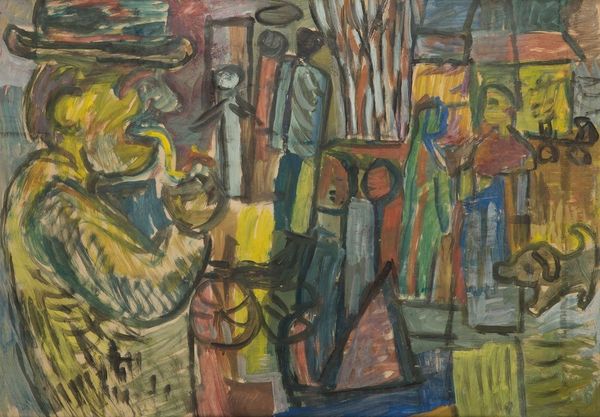
painting, oil-paint
#
abstract expressionism
#
abstract painting
#
painting
#
oil-paint
#
landscape
#
figuration
#
oil painting
#
expressionism
#
genre-painting
#
expressionist
Copyright: Modern Artists: Artvee
Curator: Looking at Iwo Zaniewski’s “Spring,” I am immediately transported into a hazy memory of a place I've never been. It feels strangely intimate, like a stolen glance. Editor: Yes, there is an intimacy to this oil painting, a perspective into a personal, artistic space. Although undated, this painting hints at a particular socio-economic condition of the artist through the rendering of the figure(s), objects, and interior space as related to exterior world. The studio, with its tools and finished work, acts as an extended mirror to the artist’s soul and his position in the world. Curator: Absolutely! And the shadowy figures almost blend into their surroundings, as if the space itself is alive and breathing. I'm fascinated by the tension between the controlled chaos of the interior and the serene, almost dreamlike, view outside the window. There is a surreal harmony achieved with vibrant contrasts in color between the figures/objects of the studio space and what appears to be the external garden space. What kind of mood does that strike in you? Editor: Well, for me, I notice a slightly unsettling paradox in this vibrant depiction. "Spring," a symbol of birth and renewal, is painted using tones of confinement, muted light, and shadowed, almost imprisoned figures. The eye, if not trained to focus on the outside world in the periphery of the frame, struggles to discover an emblem of "spring" on first glance. Is this optimism deferred or denied to the painting's figures, confined by parameters beyond reach and/or control? Curator: That’s a really poignant point, highlighting an inherent paradox within the artwork itself. And how the use of the term "spring" might offer a stark contrast from the realities of both Zaniewski and his immediate figures during this time period and socioeconomic situation. The figures become embodiments of interiority against an exterior world that seems enticing yet elusive. Editor: The expressionistic style heightens the emotional impact of what could be deemed simple or common: someone at work, a man contemplating the scenery. Yet through the somewhat unsettling darkness, Zaniewski hints at more profound depths and asks questions that art must propose even when the artist might be able to fully offer answers. Curator: Indeed, the lasting power of “Spring” lies in its ability to be both intensely personal and broadly resonant. An artist using abstraction to convey his felt reality…it almost makes you feel less alone somehow. Editor: And that's how it also situates the art within movements such as post-war expressionism while using form to highlight the socio-political condition under which it was conceived. Powerful stuff!
Comments
No comments
Be the first to comment and join the conversation on the ultimate creative platform.
